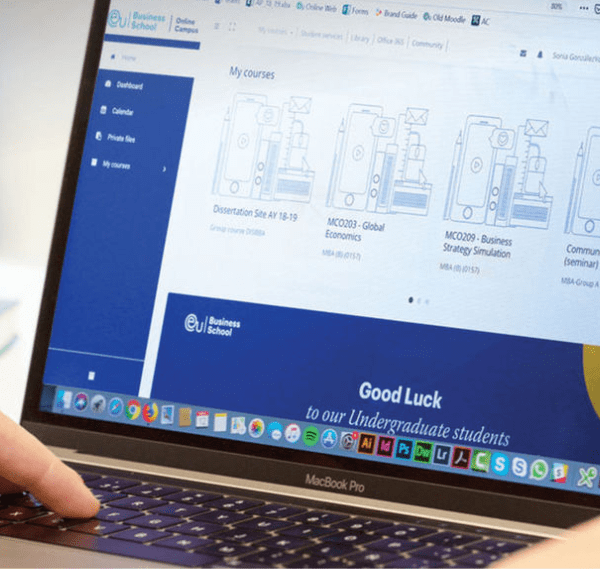Public Relations (PR) in the Era of Communication Overload: 6 Essential Points
The phrase “information overload” isn’t just an overused cliche. Research shows that, as a society, we’re drowning in information. And we’re becoming increasingly fatigued and disconnected as a result.
For those responsible for cultivating the image and public perception of a brand or company, this is a big problem. Public relations specialists are increasingly asking the question, “How can we reach customers with a compelling story when so many others are vying for their attention?”
In this post, we’re going to look at six ways that organizations of all shapes and sizes can reach their target markets (and beyond) in the modern era of communication overload.
What Is Public Relations?
“Public relations” is one of those terms that everybody has heard of but few actually understand. Writing in Forbes, PR expert Robert Wynne said that “PR people are storytellers. They create narratives to advance their agenda. PR can be used to protect, enhance or build reputations through the media, social media, or self-produced communications.”
This definition summarizes the role of public relations perfectly. Fundamentally, it is about crafting and maintaining a story that connects with people inside and outside of a company’s sphere of influence. Public relations spans all forms of communication, from paid ads to earned publicity in traditional media outlets.
1. Realize That Your Story is Your Most Valuable Asset
At its core, public relations is about cultivating a specific and attractive image of an organization. PR experts are storytellers, and it’s their job to hone and build a story, made up of values, a mission and a unique value proposition, that connects with and entices customers on an ongoing basis. And in the age of communication overload, powerful stories are what customers are really looking for.
Once you have a strong “story”, when you know what your organization stands for, it will saturate every aspect of your public-facing activities, from writing a one-off press release to setting the editorial calendar for a longer-term content marketing campaign. It’s the first and most important foundation of a successful PR strategy.
2. Prioritize Quality Over Quantity
The internet has arguably contributed to information overload in the modern era more than any other medium or channel. We create approximately 2.5 quintillion bytes of data every day, and this figure is only expected to grow in the future. But this phenomenon has had an unusual effect: while information is abundant, expertise is scarce.
Faced with an endless array of content, consumers are increasingly relying on a handful of high-authority sources. By associating your brand with premium-quality information, whether in blog posts, social media posts, press releases and so on, you are positioning yourself as an authority and gaining a key competitive advantage.
3. Look to the Long-Term
One of the deadliest mistakes that public relations people can make is pursuing short-term goals at the expense of long-term positioning and perception. It’s easy to become consumed with an easy newspaper placement or an exciting social media trend, for example, and lose sight of the broader picture in the process.
It’s important to ask the question, “What kind of image do I want to portray?” and allow the answer to inform every aspect of your PR strategy. Building a brand takes time. And having a strong long-term outlook will enable you to allocate resources strategically, cultivate a consistent value proposition and leverage the most promising opportunities fully.
4. Recognize the Real Influencers in Your Space
Media and public relations go hand in hand. Once you have created a compelling story and set long-term goals, you should familiarize yourself with all the big media players in your space. When you know which publications, both online and offline, carry real clout, you can focus your marketing efforts and develop relationships accordingly.
Remember to research the audiences of publications so that you don’t waste resources targeting people that will never connect with your brand. It’s also essential to take a personal approach – research and target individuals, like editors and journalists, rather than media outlets generally.
5. Cultivate Personal Relationships
Keep in mind that it’s not just your customers that are victims of information overload. Individuals with the ability to drive publicity to your brand and projects – editors, writers, bloggers, broadcasters, etc.- are likely bombarded with hundreds of emails a day. To prevent your voice being drowned out by the crowd, cultivate personal, one-on-one relationships over the long-term.
Keep in mind that publishers are looking for stories that will appeal to their audiences. You should always thoroughly research a publication before reaching out and ensure that your pitches are highly tailored. In this way, you will provide a value exchange that works for both you and the media outlet you are targeting.
As you build relationships with people in your space, you will find that opportunities for collaboration and mutually beneficial partnerships arise more often.
6. Relentlessly Test New Communication Channels
New communication channels, in the form of social media sites, emerging publications, ad platforms and so on, provide you with two excellent opportunities. First, they allow you to reach customers without the noise of competitors. Second, it’s often possible to build an engaged following quickly. In this way, when a platform does become crowded, you’ll be able to communicate with customers from a place of relative authority.
Take a rigorous approach to testing new channels. Build processes into your overall public relations plan so that a portion of your resources are allocated exclusively to this area. While many platforms will be unsuitable, the return-on-investment driven from even a handful of successes will make this a worthwhile strategy in the long-term.
Launch Your Career With EU Business School
Are you excited by the prospect of a career in public relations? At EU Business School, you’ll gain all the skills, knowledge and hands-on training that you need to thrive in your chosen field.
Take a look at our Bachelor of Arts in Communication & Public Relations and our MBA in Communication & Public Relations.










